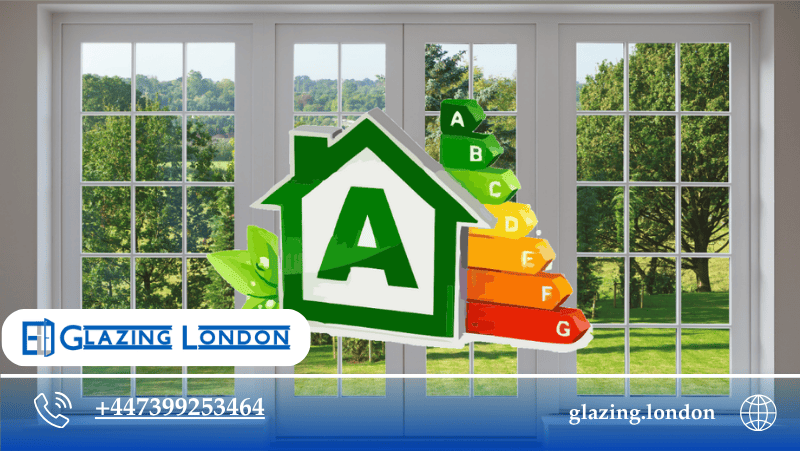The underrated noise-proofing upgrade London homeowners don’t know they need
London never sleeps .
Red buses growling past in the early morning . Delivery vans reversing , alarms shrieking . Neighbours , tourists , nightlife , construction — always construction . In quieter cities , silence arrives on its own; in London , you have to build silence yourself .
People try everything to create a quieter home:
- thick curtains
- heavy blinds
- weather seals
- noise-blocking foam
And yet noise finds its way in — through the windows .
Especially sash windows , those beautiful icons of London architecture that are also terrible at insulation .
People love the aesthetic , hate the sound .
But here’s something most homeowners don’t realise:
You don’t need to replace your windows .
You can upgrade them .
Double Glazing London
Secondary glazing — discreet , elegant , almost invisible — can turn a noisy London home into a quiet sanctuary .
This is a deep dive into how it works , why it’s often better than double glazing , and why homeowners who try it say the same thing:
“I didn’t know peace and quiet could feel this good .”

The real source of noise: not outside — your windows
Before talking about solutions , we need to understand the problem .
Noise doesn’t simply “get through” your window .
Door Installation in London
It vibrates the glass , transfers into the frame , then into the walls and into your living space . Older windows , especially single-pane sash windows from Victorian or Georgian buildings , aren’t built to defend against vibration .
They were designed for ventilation — not silence .
Modern double glazing helps , but…
- listed buildings often don’t allow it
- sash windows are expensive to replace
- many frames aren’t compatible
Secondary glazing approaches the problem differently .
Instead of removing windows , it creates a quiet zone behind them — inside the property — forming a pocket of air that blocks noise vibrations .
What exactly is secondary glazing?
Think of it like noise-cancelling headphones for your home .
Secondary glazing adds a second pane of glass on the inside , leaving your original window untouched . The beauty lies in the gap between the two panes: that space is a natural sound barrier .
Sound needs a medium to travel through .
The air gap becomes the dead zone where noise loses its power .
The closer it gets to your interior pane , the weaker it becomes .
The result?
Peace . The kind of peace that makes you notice your breathing .
Unlike full window replacement:
- It does not change the exterior appearance
- It does not violate listed building regulations
- It does not require planning permission
And installation is fast — often within a day .
Window installation in London
Why Londoners choose secondary glazing over double glazing
People assume double glazing is the ultimate window upgrade .
But here’s the surprising truth:
Secondary glazing can be even more effective at soundproofing than double glazing .
Why?
Because double glazing places two panes close together . The air gap is small — good for thermal insulation , but not always ideal for noise reduction .
Secondary glazing introduces a much larger gap between the original window and the secondary panel .
That gap is where the magic happens .
The space disrupts vibration , breaks the noise path , and creates a buffer that noise simply struggles to cross . It’s physics , not marketing .
If your home faces:
- a busy street
- a railway line
- a school or stadium
- nightclubs or bars
secondary glazing is often the most effective solution .
It turns a noise problem into a non-problem .
uPVC Window Installation in London
The London noise epidemic that nobody talks about
Noise pollution is not just annoying — it’s harmful .
Studies in urban environments reveal links between constant exposure to noise and increased stress hormones , poor sleep , and reduced concentration . TfL and environmental agencies have measured central London street noise at 80–90 decibels at peak hours .
To put that in context:
- 30 dB = silence in a library
- 60 dB = normal conversation
- 90 dB = lawnmower / heavy traffic
London regularly hits 85 dB from traffic alone .
If your windows are original single panes , you are basically inviting the street into your living room .
Secondary glazing reduces noise by up to 80% (depending on window construction) , which can be the difference between restless sleep and deep , uninterrupted rest .
It’s not just sound reduction — it’s mental relief .
How secondary glazing works (the science without the headache)
Acoustic engineers talk in terms like “sound transmission loss” and “airborne frequency absorption .”
We can translate that into something anyone can visualise:
Noise travels like a ripple in water .
When it hits a solid object , it tries to transfer energy into whatever is on the other side . Standard glass is rigid . It vibrates in response , and the vibration becomes sound again inside the home .
Secondary glazing interrupts that vibration chain .
Imagine shouting into a pillow . The pillow absorbs vibration and prevents sound from rebounding cleanly .
Secondary glazing does something similar:
- The outside pane vibrates from noise .
- The air gap disrupts the vibration path .
- The internal pane absorbs the remaining vibration .
You hear significantly less — and sometimes nothing at all .
Noise reduction becomes a physical process , not wishful thinking .
The hidden benefit: thermal insulation
People usually seek secondary glazing for noise reduction , but they discover a pleasant side effect:
Their heating bills drop .
London homes leak heat like crazy — especially period properties with sash windows . Secondary glazing traps warm air inside and prevents outside cold from penetrating .
That means:
- Lower energy bills
- Fewer drafts
- Warmer winters
- Less condensation on windows
Silence becomes comfort .
Comfort becomes savings .

Why landlords , buyers , and estate agents love it
Secondary glazing increases property value in a way that’s rarely advertised .
Someone walking into a quiet London flat immediately perceives it as:
- calmer
- safer
- higher quality
Silence has a luxury price tag .
Estate agents talk about “light” and “space ,” but rarely talk about noise — because noise is difficult to fix . Secondary glazing turns a loud property into a profitable one .
Landlords use it to:
- reduce complaints
- reduce tenant turnover
- improve EPC ratings
Investors see it as one of the highest return upgrades per pound spent .
Why homeowners love it even more
Because unlike full window replacement:
- No one touches your original frames
- There is no exterior change
- Zero planning permission is needed
- Installation is quick and clean
And if you have beautiful sash windows , you keep them — you simply enhance them .
Secondary glazing doesn’t fight against your architecture .
It works with it .
The emotional transformation: when noise disappears
Here’s the marketing truth most installers never say:
People don’t buy secondary glazing because of soundproofing .
They buy it because of how silence feels .
The first night after installation , clients notice something strange .
The city continues outside as usual , but their room feels separated from it .
No buses .
No chatter .
No sirens echoing off the glass .
Just stillness .
Silence is not empty — it’s full .
It’s full of focus , rest , presence , comfort , privacy .
Secondary glazing doesn’t just improve a window .
It transforms the interior space into a refuge .
One customer in West Kensington said:
“For the first time since moving to London , I heard silence .”
Installation: what actually happens
Homeowners often imagine noisy construction work , dust , drilling chaos .
The reality is much simpler .
The new glazing is installed inside , discreetly attached to the existing frame . Technicians measure everything beforehand so that installation takes only a few hours . No scaffolding , no debris , no exterior work .
When the team leaves , the only visible change is that the room feels calmer .
Secondary glazing vs window replacement (the honest comparison)
Window replacement is disruptive .
You’re removing old frames , disturbing plaster , and potentially running into planning restrictions — especially with heritage or conservation area properties .
Secondary glazing avoids all that .
Where replacement tries to upgrade the entire history of your home in one go , secondary glazing is respectful: it protects the past while improving the present .
If your building is listed or in a conservation area , secondary glazing is usually the only legally approved option .
And if your primary goal is noise reduction , not window modernisation , it’s the best choice regardless .
The marketing advantage for installers
(this part is tailored to your commercial glazing business)
Most competitors describe secondary glazing like this:
- “improves insulation”
- “reduces noise”
- “energy saving”
This is functional . Informational .
Every installer says it .
The content-marketing angle is different:
“We don’t just install glazing — we give London homeowners silence .”
Sell the transformation , not the feature .
People don’t crave 80% noise reduction .
They crave quiet mornings , restful sleep , privacy , comfort , and peace .
Those are emotions .
Emotions sell .
Your business becomes the solution to the problem Londoners don’t know how to solve:
“I want quiet , but I don’t want to replace my windows .”
Secondary glazing is the answer .
The psychological reward of quiet living
Silence increases:
- concentration
- productivity
- relaxation
- emotional stability
Noise doesn’t just disrupt sleep — it disrupts thinking .
Silence is not a luxury .
It’s a human requirement .
When homeowners invest in secondary glazing , they’re not paying for glass .
They’re buying space where life finally feels calm .
Conclusion: silence is the new luxury
Secondary glazing isn’t just a home improvement product .
It is a lifestyle upgrade .
Your home becomes:
- quieter
- warmer
- more comfortable
- more valuable
With no planning permission .
With no construction mess .
With no architectural compromise .
London can remain loud .
Your home doesn’t have to be .





